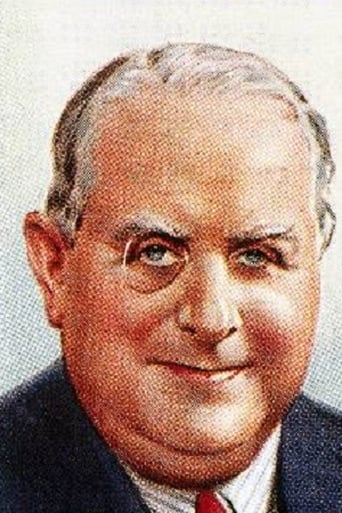PlatinumRead
Just so...so bad
Pluskylang
Great Film overall
Beystiman
It's fun, it's light, [but] it has a hard time when its tries to get heavy.
Edwin
The storyline feels a little thin and moth-eaten in parts but this sequel is plenty of fun.
malcolmgsw
This is an interesting and intriguing film.Everything is a dig aimed at the BBC.Will Hay plays William Garland director General of NBG which of course stands for no bloody good.Hays name is a play on the name of John Reith the stuffy moralistic head of the BBC.The film accurately reflects the then current battle between radio and the music halls.They were already on their names from a combination of radio and talkies.They would stagger on for a further 25 years before being dealt a knockout blow by TV.There are so many famous music hall performers showcased by this film it is a real treasure trove.The film is ahead of its time in featuring TV which would become a reality in 1936.
swallin
Radio Parade of 1934 is somewhat dated, as in Historic, but the film is a lexicon of the Variety and Radio stars in the UK during the 1930's, and great fun to view the range of 1930 stars of the Radio and stage.Will Hay is a bit underused in the film and the structure is a bit poor as will most compendium style musical films, the plot is very thin. but it is the glimpse of long forgotten acts and performers that makes the film one of the very best of it's type. It was written to pock fun at the BBC, and also Television, which for the Folks in the USA, was a UK invention, and well known in the early 1930's, and they were about to open the worlds first TV station at the BBC. Experimental TV broadcasts were common in the UK from 1930, especially to outside or store broadcast demonstrations. The character of the TV inventor was directly aimed at John Logie Baird, the TV pioneer from Scotland.The Art Deco style of the NBG Studios was a direct pastiche of the then brand new BBC Broadcasting House, complete with identical fittings!! Many of the stars in the film worked for the BBC, but perhaps less after the film. Will Hay himself had a prickly relationship with radio, a top star though, as the others were in their day.The final colour sequence was a British Colour Process from Dufay, which worked, but had problems with multiple copies, DVD copies often have a poor rip off version. The Prints come from a unique faded copy found at Denham Studios, which was massively restored in the 1990's. Dufay colour worked well for stills, but full movies proved beyond the system.A delightful period piece, well made and worth viewing, but US viewers may be a bit bemused by the details being so very British.
Ted Hering
The story line is simple: A new program director of the NBG radio network (clearly a parody of the staid BBC) wants to update the programs with new talent. The stuffy powers-that-be are determined to keep dignity and tradition.Musicals are always hard to rate. In this case, the silly Three Stooges type story line and humor is really glue to hold the production numbers together. The movie is, in fact, a genuine variety show - and some of the acts are quite good. Several routines mimic Busby Berkeley. Others are pure vaudeville. I'd have to say the high point is the color segment with Alberta Hunter (an African-American who made recordings with Fats Waller). In addition to Alberta's stirring singing, the backup dancers stand on over-sized African drums, to give a surrealistic, dream-like effect. Unfortunately, this was evidently Alberta's only movie. Another high point for me is the novelty act by Stanelli, a brief segment in which the maestro plays tuned auto horns. But then, I'm a fan of Spike Jones.As for the comedy bits, I think the funniest moment is the "exercise" program, in which an overweight "coach" leans back in his overstuffed chair, counting out "1-2-1-2..." into the microphone, and pumping a billows in rhythm to simulate his vigorous breathing.Surely this film is more nostalgic to British audiences than to us Yanks. I'm led to believe the performers were all theater and music hall favorites in their day.
Gerald-5
So, what was surprising about it? There is an anti-Hitler comment which, for 1934 when the film was made, was unusually perspicatious. There is a long number by a black singer deploring the fact that people think she has sin because of the colour of her skin (I wonder if the film was shown in the US of A?) and there is a massive television broadcast to mobile outdoor screens - surely, in 1934, no one really thought TV would ever amount to that?



